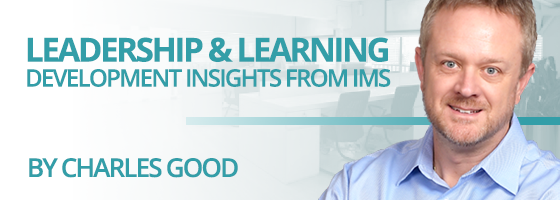Design thinking continues to be discussed and talked about in many organizations to unleash the creative potential of their teams. Unfortunately, the promises of design thinking have not been realized in many organizations because of structures and processes that do not support this framework. Professor Michael Roberto, in his best-selling book, Unlocking Creativity, discusses five mindsets that prevent many organizations from realizing the benefits. Arguably, the biggest challenge of why design thinking is tough to implement is the difficulty of most organizations have with moving from a linear thinking style to an iterative, non-linear thinking style.
Linear (or sequential) thinkers view a problem as a step-by-step process that will eventually lead to a solution. Typical planning processes flow from collecting and analyzing the research to planning and budgeting before executing. As long as reality unfolds as expected, this process works. However, when novelty and change are introduced, as in our present VUCA environment, this process is not very effective. Russell Ackoff offers his thoughts on the efficacy of corporate planning in the following statement, “A good deal of corporate planning I have observed is like a ritual rain dance. It has no effect on the weather that follows. But those who engage in it think it does. Moreover, it seems to me that much of the advice and instruction related to corporate planning is directed at improving the dancing, not the weather.” What this ‘new normal’ has taught us is that we need an innovative approach if we are to adapt successfully.
Even though design thinking has been around for centuries in various forms, the current renaissance of this type of thinking could be partially attributed to IDEO, a design firm in Silicon Valley. The public was exposed to this firm and its design thinking process during an episode of Nightline on ABC, which chronicled the firm’s efforts to design a shopping cart. IDEO and other firms espoused the benefits of the design thinking process, which extended beyond the field of industrial design.
The design thinking process is an iterative process that is messy and unstructured. But who doesn’t want a replicable process to solve problems in creative ways which removed the roadblock of hiring people with strong creative talents? Tim Brown, an executive at IDEO, defines design thinking as a human-centered approach to innovation that draws from the designer’s toolkit to integrate the needs of people, the possibilities of technology, and the requirements for business success. It’s usually defined in the following stages.
STEP 1: OBSERVATION
How are your people behaving? What do they think and feel? This customer discovery process needs to focus on what makes up a meaningful experience for your customer. For this to happen, you need to immerse yourself in customer research.
STEP 2: SEARCH FOR PATTERNS
In this stage, you want to make sense of the data you collected. Look for patterns and insights that are in the data but have yet to be discovered. This can be a daunting step, trying to make sense of the mountains of data collected during the previous discovery stage. The goal is to provide meaningful insights and plausible reasons their customer is behaving in a particular way.
STEP 3: IDEATE
This is the part that most people are excited about when they think of design thinking. However, unless the first two stages are done correctly, there will be a higher incidence of the ‘garbage-in, garbage-out issue. Ideation is all about generating a wide range of options that speak to the design challenges identified. For each of the ideas, you should identify assumptions, as well as conditions necessary for their success.
STEP 4: PROTOTYPE
The goal of this stage is to create prototypes that are rough and inexpensive. These prototypes should not be finished products nor should they be ‘minimum viable products’. Low fidelity versions can be easily altered in response to feedback during the testing phase.
STEP 5: TESTING
At this final stage, designers are testing their solutions and getting feedback. The learning that occurs in this phase informs the iterative process. Assumptions concerning critical success factors are also being evaluated by these rough prototypes.
So why don’t organizations replace linear thinking with design thinking? As Michael Roberto has identified several common obstacles associated with this learn-by-doing process.
- Sunk cost trap: Once we become invested in a particular solution, it is hard for us to abandon it. In many cases, we are more than willing to throw good money after bad money. In addition, we tend to look for confirming evidence for this idea or solution (confirmation bias).
- Fundamental attribution error: We often attribute our own failures to something external to us, such as our environment or other external factors. As a result, we don’t make the necessary internal changes to improve our ideas and solutions. However, for others, we attribute their mistakes to something inherent in them.
If we are to realize the potential of design thinking to unleash our creative potential, then we need to drop mindsets such as linear thinking and embrace this learning by doing approach. Harvard Business Review contributing writer Jeanne Liedtka stated that design thinking has the potential to do for innovation what Total Quality Management did for manufacturing by unleashing people’s creative energies and significantly improving processes.
For more on innovation, please read our blog from October, 2021 discussing Dr. Hal Gregerson’s Questions Are The Answer approach to reframing problems.
ABOUT CHARLES GOOD
Charles Good is the president of The Institute for Management Studies, which provides transformational learning experiences that drive behavioral change and develop exceptional leaders. Charles is an innovative and resourceful leader who specializes in bringing people together to develop creative organizational and talent strategies that enable business results. His areas of expertise include assessing organizational skill gaps and leading the design, creation and delivery of high impact, innovative learning solutions that achieve business goals.
